10 abandoned spaces given a new lease of life
Once abandoned infrastructure totally transformed
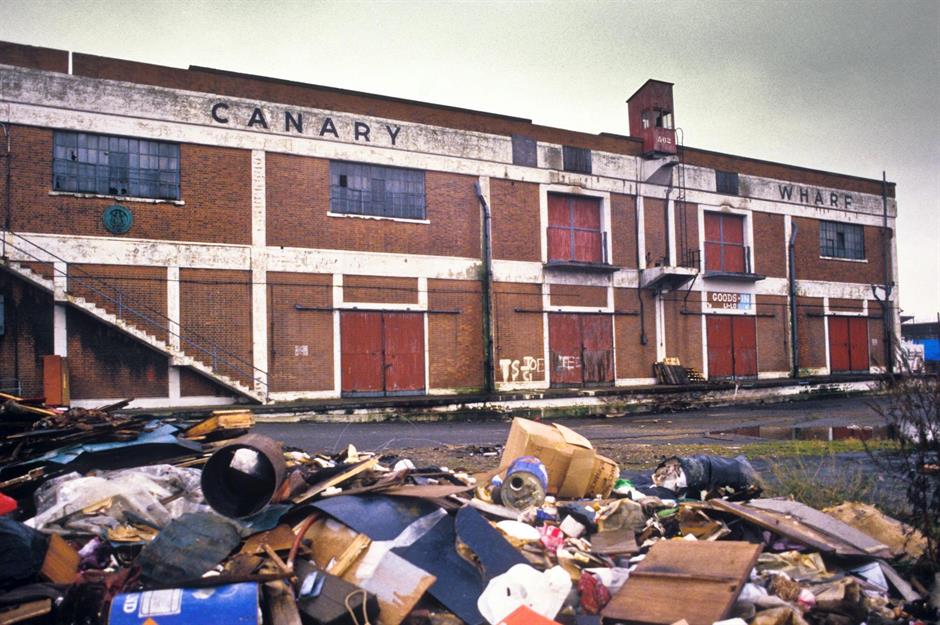
Urban regeneration often leaves behind forgotten patches of major cities. But sometimes, abandoned facilities – including railyards, warehouse districts, and even airports – are transformed into exciting new community spaces and workplaces.
From a London power station to a Chinese village, read on to discover 10 new developments in abandoned and unlikely places.
All dollar amounts in US dollars
Battersea Power Station, UK
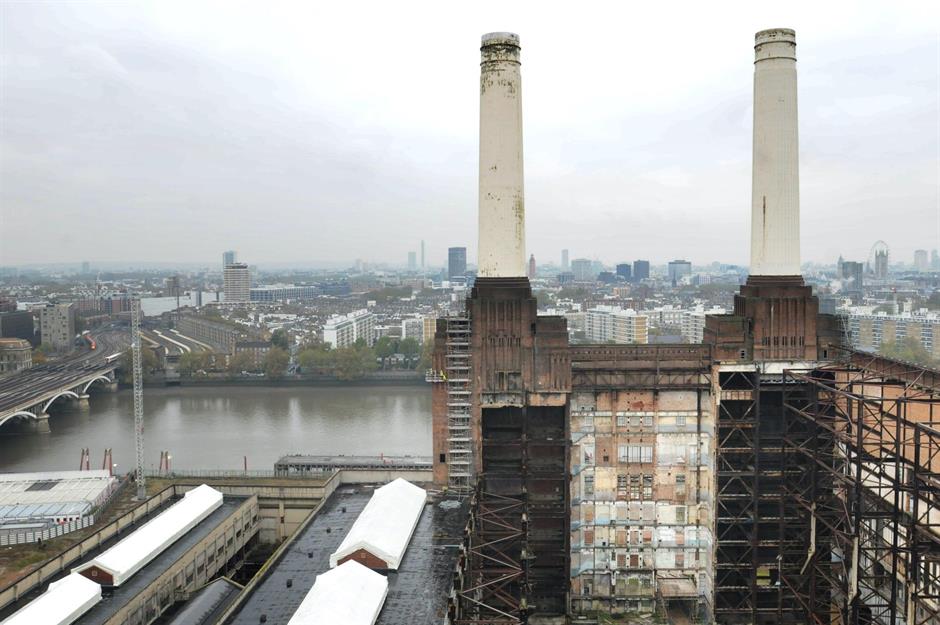
At its peak, London's Battersea Power Station produced a fifth of post-war London’s power and its iconic architecture made it one of the most recognised landmarks in the UK.
The first phase of construction began in 1929, with the station generating power by 1933. This phase alone cost £2.1 million, or £190 million ($240m) in today's money. Work for the second phase of construction – the third and fourth chimneys – finished 20 years later.
By the 1970s, however, the station faced rising costs and falling output, along with the negative health impacts of burning coal. It closed in 1983 and while the possibility of converting it into a theme park was explored, nothing came to fruition. The station sat abandoned for decades.
Battersea Power Station, UK
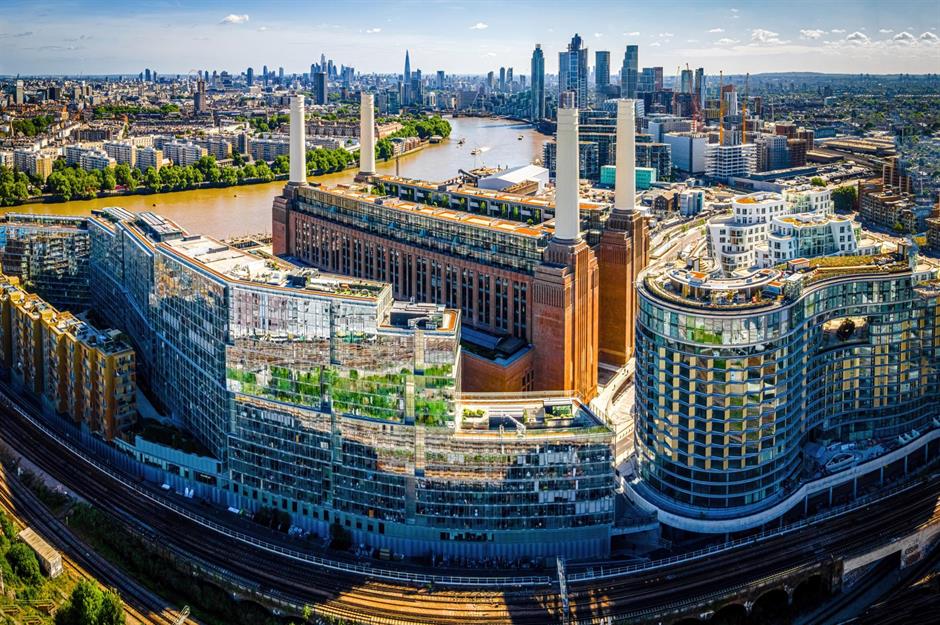
A group of investors purchased Battersea Power Station in 2012 with ambitious plans to redevelop the entire 42-acre site, creating homes, shops, restaurants, cultural venues, and green space.
This has been divided into eight phases and many of the biggest names in architecture have been involved in designing the new neighbourhood and business quarter in South London.
An extensive renovation of the power station itself included the restoration of its Art Deco structure and reconstruction of the chimneys, among other work to convert the massive brick facility from powerhouse to mixed-use development.
Battersea Power Station, UK
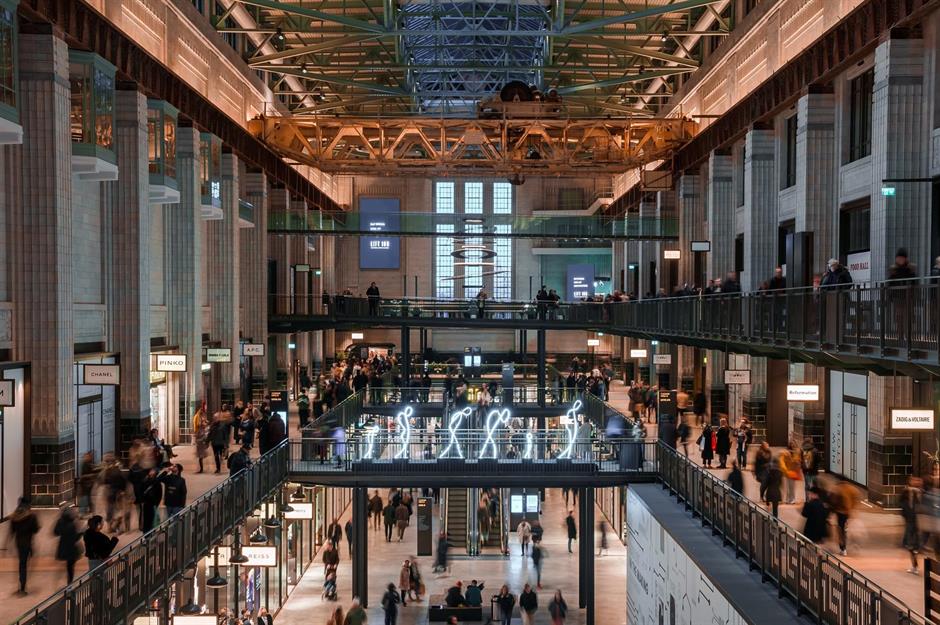
In 2016, tech firm Apple announced it would relocate to the site, creating a London headquarters for 1,400 staff.
By the following year, the first part of the development, Circus West Village, was complete with as many as 1,800 residents moving in. The power station opened to the public in October 2022 with a new shopping mall in the former turbine halls, a cinema, and even an ice-skating rink in the winter.
Reopening the abandoned power station after nearly 40 years cost around £1.3 billion ($1.7bn), with estimates suggesting the entire development will have cost as much as £10 billion ($13bn) once completed.
The High Line, USA
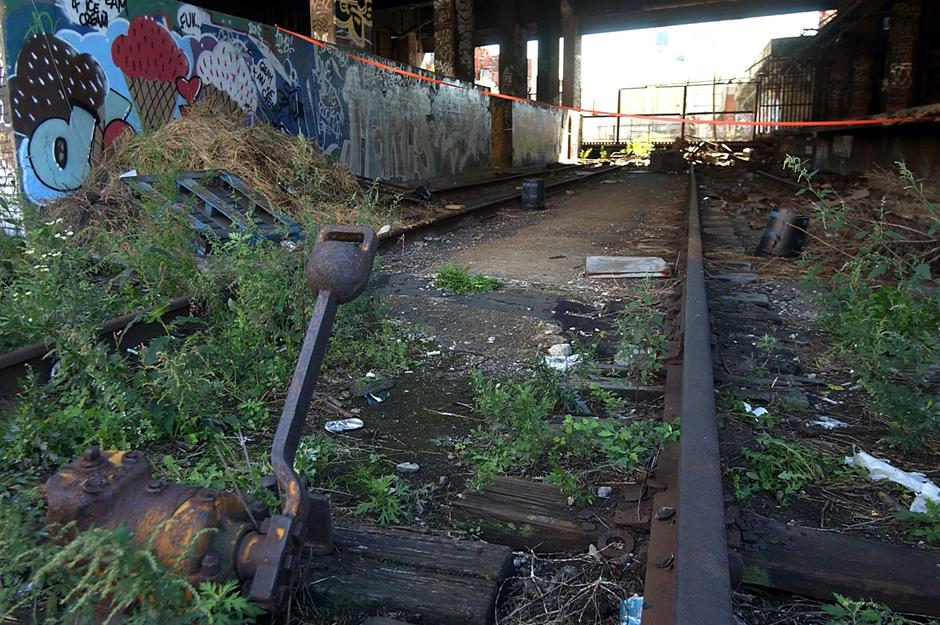
When the first freight railroads were built in New York, the street level tracks caused many pedestrian fatalities, with 10th Avenue even earning the nickname "Death Avenue".
The solution? The 13-mile (21km) West Side Elevated Line, which eliminated more than 100 railroad crossings at street level and cost at least $150 million to build in 1930. That's around $2.8bn (£2.2bn) today. It was fully operational by 1934 and even ran through the middle of several buildings to provide seamless access to factories.
However, by the 1960s, trucking had overtaken rail for freight transportation and parts of the elevated line met their demise. Over the next few decades, trains stopped running and sections of the rail that didn’t get demolished became an eyesore.
The High Line, USA
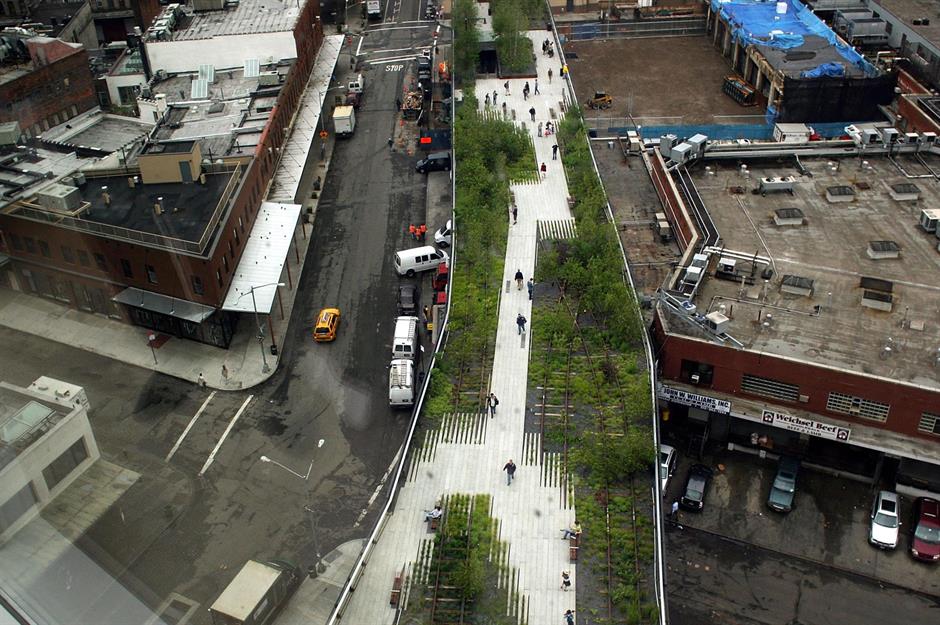
In 1999, non-profit advocacy group Friends of the High Line formed to champion reuse options for the remaining 1.4-mile-long (2.3km) long derelict structure and prevent any further demolition.
After working with the city to rezone the area, The High Line was destined to become a massive public park, 30ft (9m) above ground and stretching across the west side of Manhattan.
The first phase opened in June 2009 (pictured), with additional phases following in 2011, 2014, and 2019.
The High Line, USA
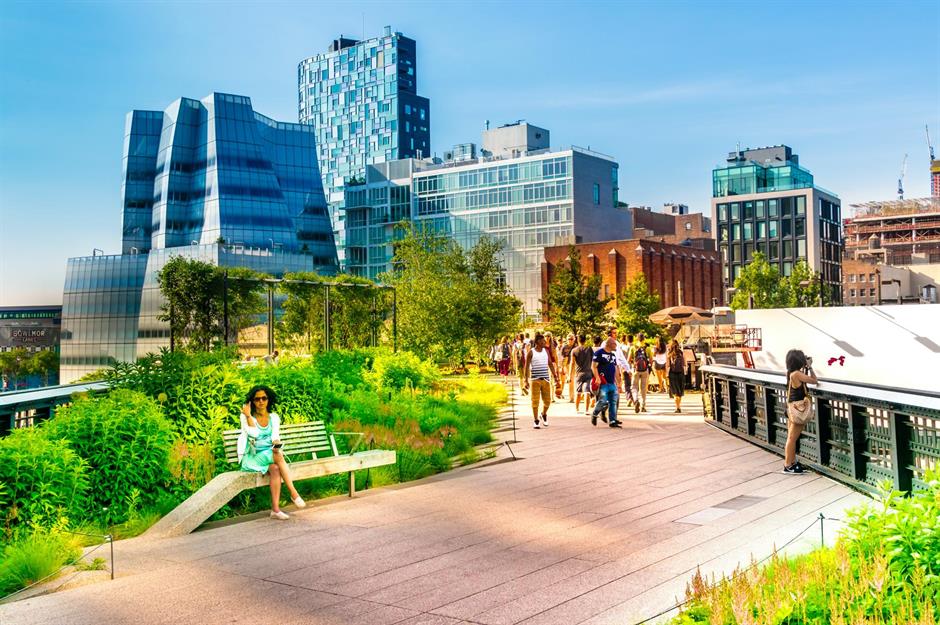
The total cost to design and build the project is estimated at $187 million (£147m), making it one of the most expensive parks ever built. However, it’s quickly become a hotspot for both New Yorkers and tourists, with around eight million people visiting annually.
Its popularity has also generated huge economic activity. Two years after its initial opening, then-mayor Michael Bloomberg reported that the park had generated as much as $2 billion (£1.6bn) in private investment in adjacent areas.
Other research found that the High Line brought in an additional $900 million (£702m) in tax revenue for the city in its first five years.
Camden Highline, UK
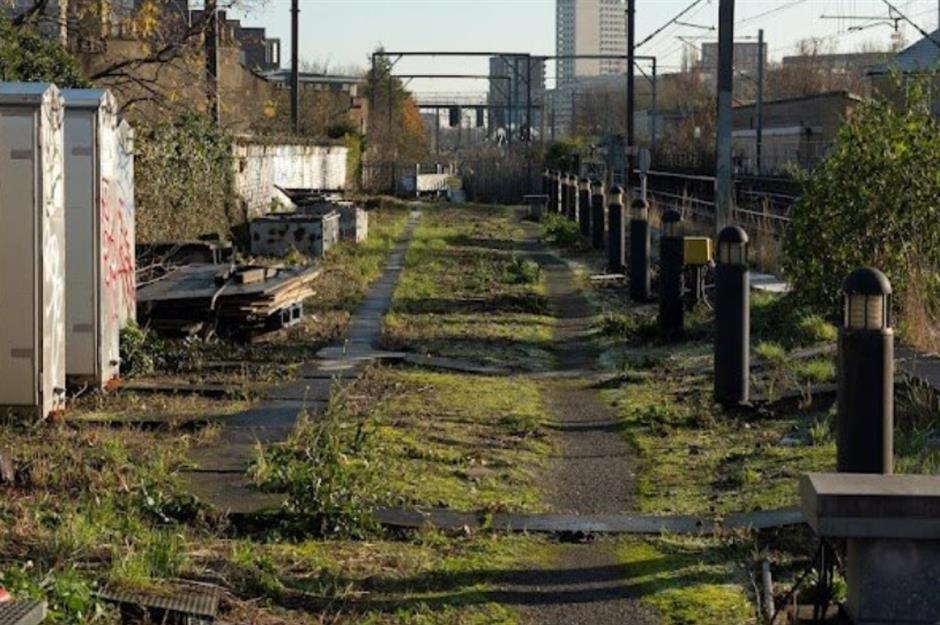
The success of New York’s High Line park hasn't gone unnoticed. In North London, a former elevated rail line is set to become the Camden Highline.
Once part of the North London Railway dating back to the 19th century, this stretch of rail between Camden Town and Kings Cross has sat derelict for 30 years. Nature has reclaimed sections of the abandoned tracks and neglected infrastructure, even though adjacent rail lines are still actively used.
Camden Highline, UK

In its entirety, the proposed development runs for about 4,000 feet (1.2km), creating park space in an area of London where many residents lack access to green space.
The team behind the project envisions the elevated park being built in three phases to ensure there's enough time to secure funding. Planning permission was granted for the first section in 2023 and the organisers have revealed they're working towards securing the required funds by the end of this year. Construction is scheduled to start in 2025, with the park theoretically opening in 2027.
Camden Highline, UK
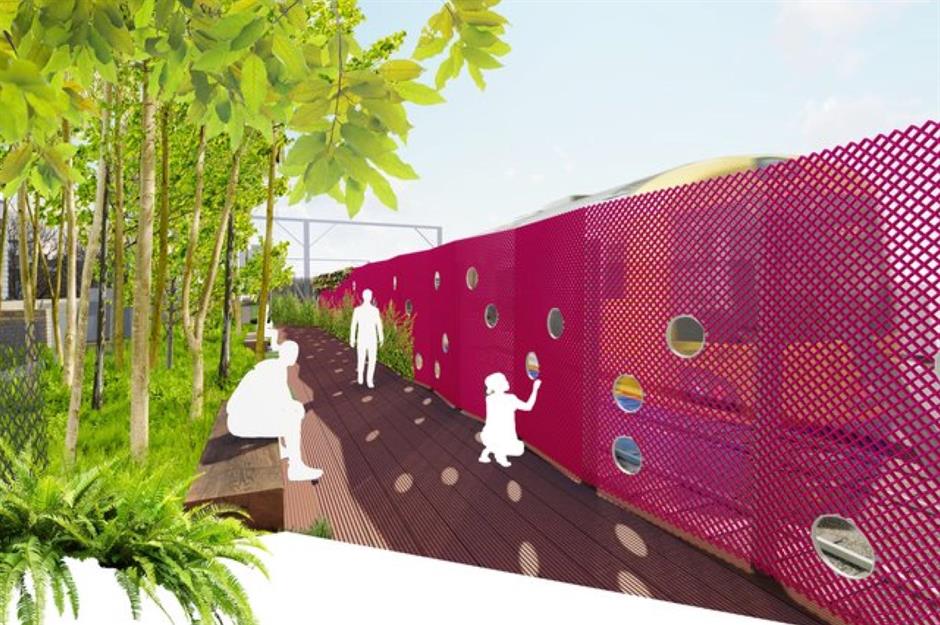
However, the project is still awaiting funding before the work can begin. Construction for the first phase is estimated to cost £14 million ($18m), and the charity behind the project says the following two sections will cost roughly the same for a total of at least £42 million ($54m).
Once construction is complete, the charity behind the Camden Highline hopes to earn income from the facility that could help to cover the cost of future phases.
Canary Wharf, UK
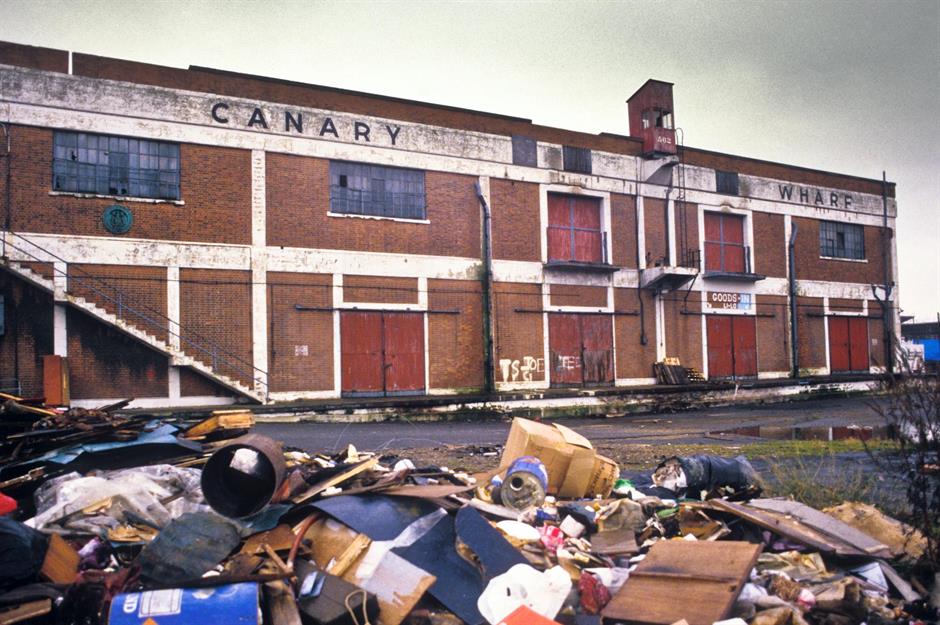
Over in East London, the once bustling West India Docks had been the heart of global trade that helped fuel Britain’s 19th-century economy. Built in the early 1800s, the initial canals, docks, and surrounding warehouses cost around £523,000 to construct, or £55 million ($70m) in 2024 money.
But the docks were heavily bombed during World War II, and post-war reconstruction efforts were delayed into the 1960s. Around the same time, freight transport began modernising beyond the capabilities of the docks. They closed for good in July 1980.
Canary Wharf, UK
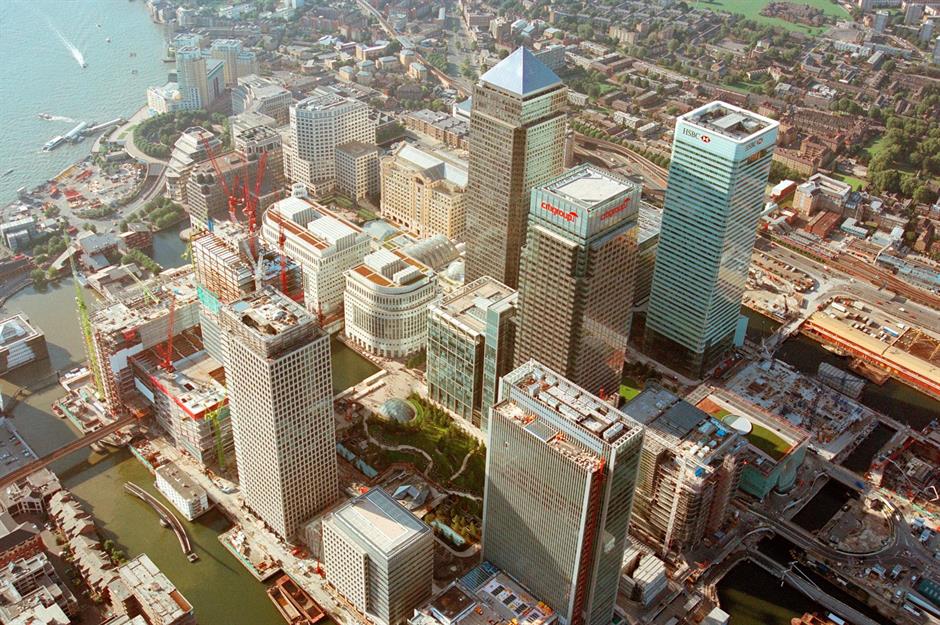
Left in ruins, the former docks offered an enticing real estate opportunity for several North American developers, who envisioned building a new financial district complete with soaring skyscrapers that could offer office space to big names in banking and business.
The master building agreement for Canary Wharf in 1987 cost £3 billion, or £10.6 billion ($14bn) in today’s money. But that was only the start of a massive regeneration scheme that would reshape East London...
Canary Wharf, UK

With the Docklands scheme drawing in office workers, Canary Wharf needed transport. The area became part of London’s Underground rail network in 1999 thanks to the extension of the Jubilee underground line.
Over the past 30 years, the abandoned docks and warehouses have been transformed into a district of glass and steel towers, offering high rise offices and apartments along with restaurants, retail, and leisure activities. The area is now worth an estimated £6.8 billion ($9bn).
Melbourne Docklands, Australia
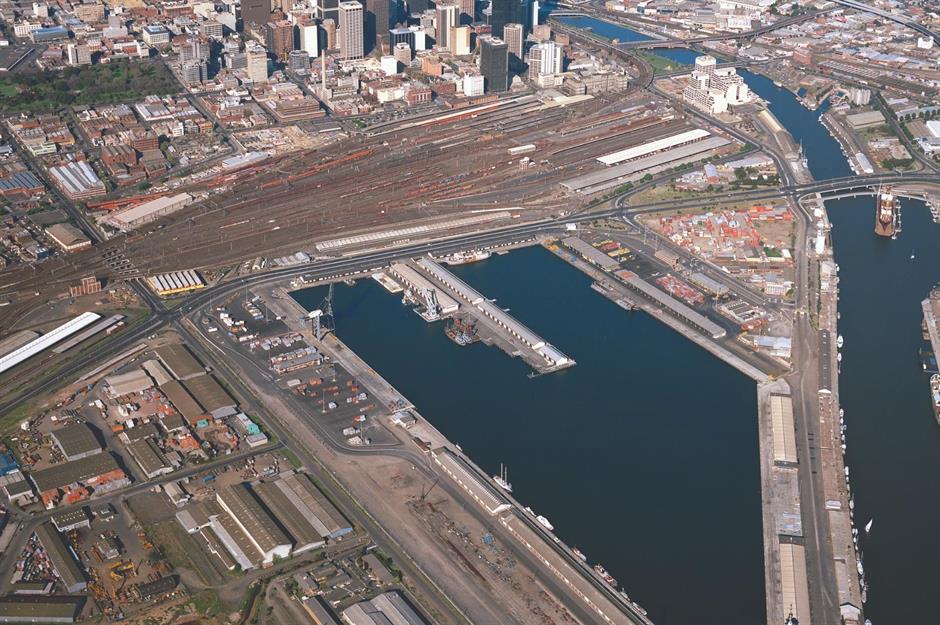
It’s a similar story Down Under, where major dredging and construction works transformed the western edge of Melbourne into extensive docks and port operations in the late 1880s.
The growth of containerised cargo in the 1970s, not to mention the decision to build a new deep-water port elsewhere, made many of the facilities redundant. The railway yards, sheds, and offices were abandoned and fell into disrepair by the 1980s.
Melbourne Docklands, Australia
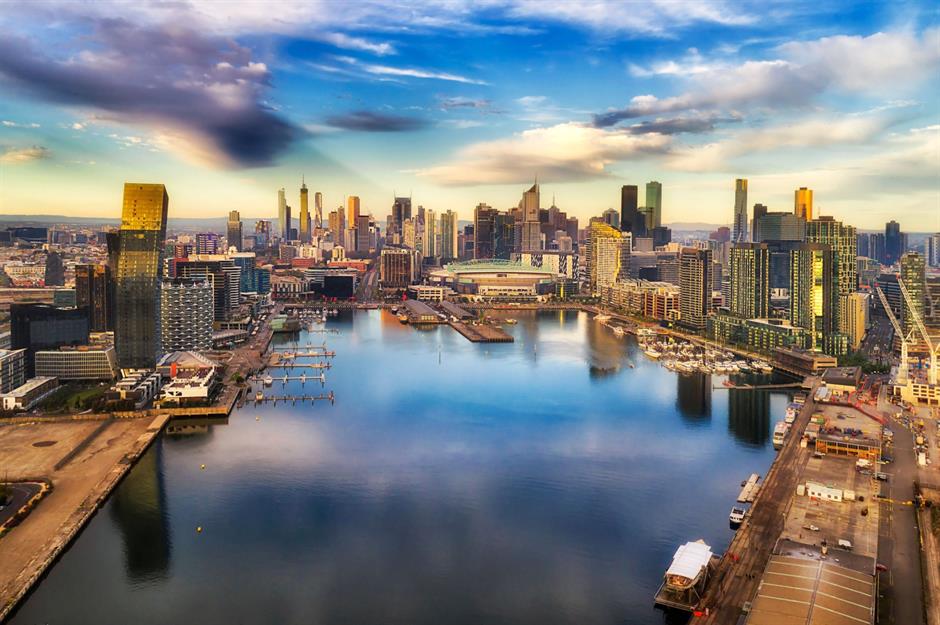
Redevelopment efforts started in the late 1990s, when the government offered financial incentives for the private sector to invest in infrastructure and other projects along the waterfront location.
By 2000 a new stadium had opened, kickstarting the construction of many high-rise apartment buildings to fill in the former industrial wasteland. Within the next 15 years, the Docklands neighbourhood had more than 10,000 residents.
Melbourne Docklands, Australia
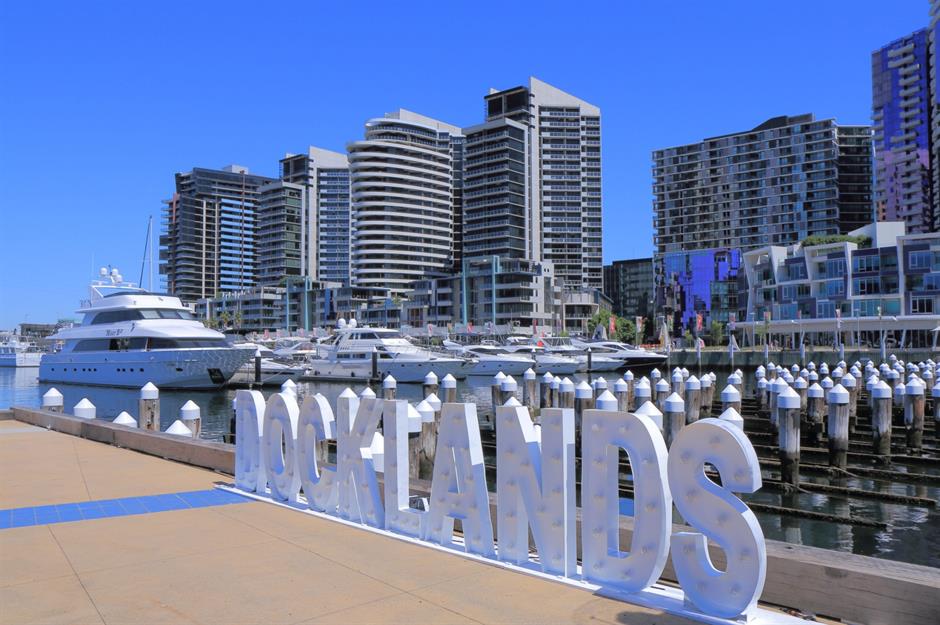
The once derelict harbour is now a top destination for dining, shopping, and entertainment. Along with hotels and other commercial real estate, office space in the district drew in as many as 73,000 workers as of 2023, according to the government of Victoria.
Around AU$14.6 billion ($10bn/£8bn) has been spent over the last 25 years to revitalise the area, which the development authority says is still only around two-thirds complete.
Stratford Olympic Park, UK
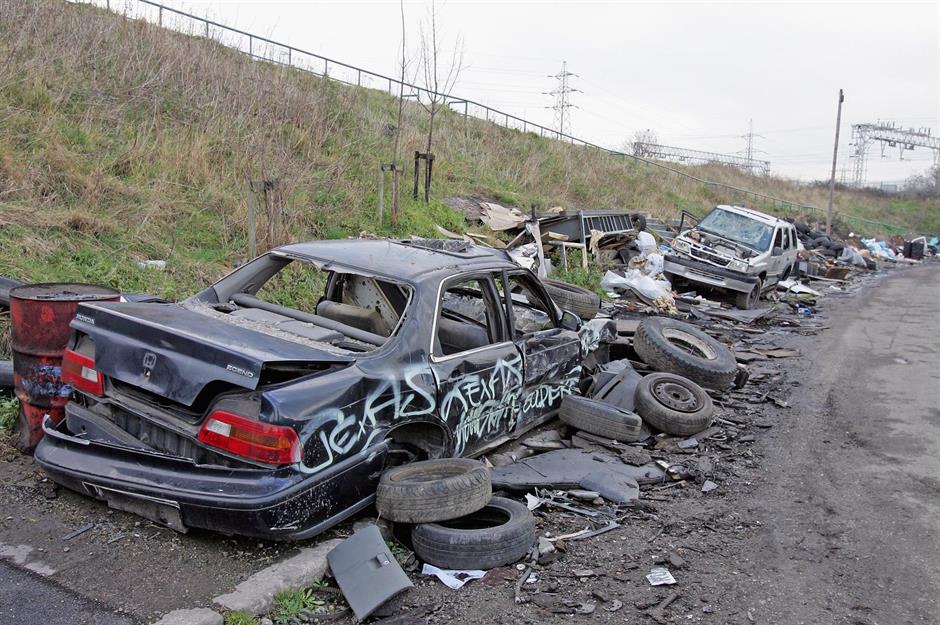
Sitting north of London’s Canary Wharf – where billions of dollars in investment revitalised the former docks in the 1990s – Stratford's abandoned industrial facilities had been left in ruins.
Once a manufacturing hub thanks to its proximity to the docks and rail operations in and out of the city, the area experienced severe damage during World War II and never recovered.
Stratford Olympic Park, UK
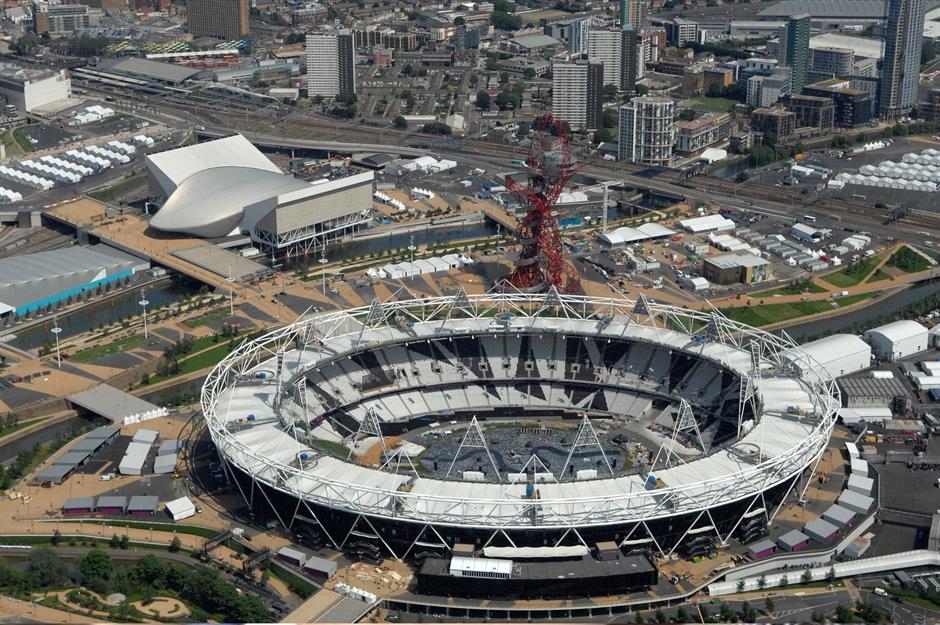
It cost £9 billion ($12bn) to prepare this corner of East London for the 2012 Summer Olympics, with one-third of that spent on the Queen Elizabeth Olympic Park.
Critics argue that the government would never have spent such a large sum on regenerating the area if it hadn't been for the Olympic and Paralympic Games taking place there.
As many as 180,000 people travelled to the Park per day while the Games were on, with the UK government reporting a £14 billion ($18bn) boost to the economy as a result.
Stratford Olympic Park, UK
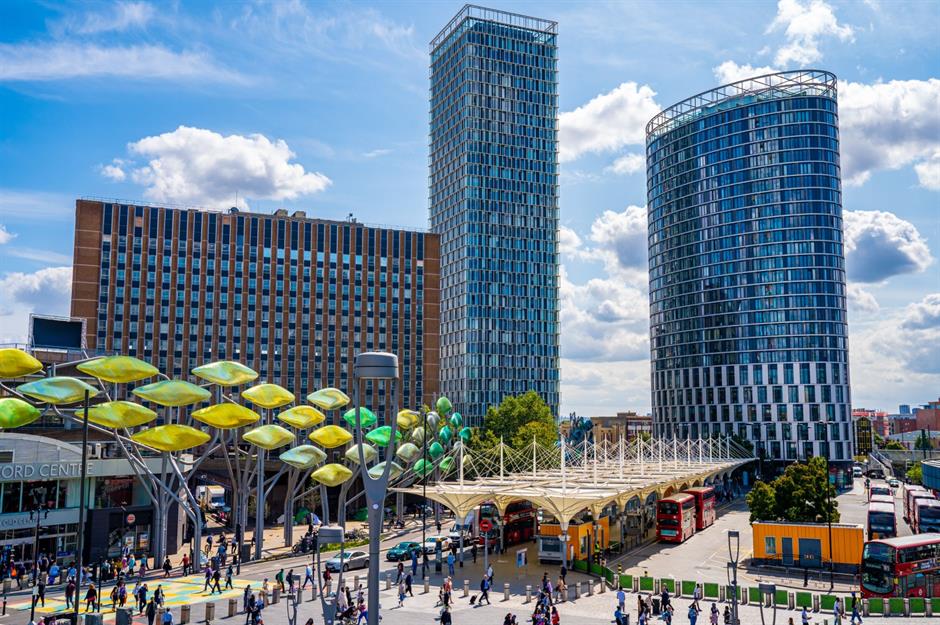
Along with building new stadium facilities to host the games in place of Stratford’s derelict factories and brownfield sites, the neighbourhood underwent a complete transformation, gaining new housing and improved transport connections. The doors were also opened to the massive Westfield Stratford City shopping centre.
Following the Olympics, several sports facilities opened for public use and developers converted the Athletes’ Village into 2,800 new homes, along with other residential investments in the area. By 2036, it’s estimated that more than 33,000 new homes will have been built in the Queen Elizabeth Olympic Park.
The Ellinikon Park, Greece
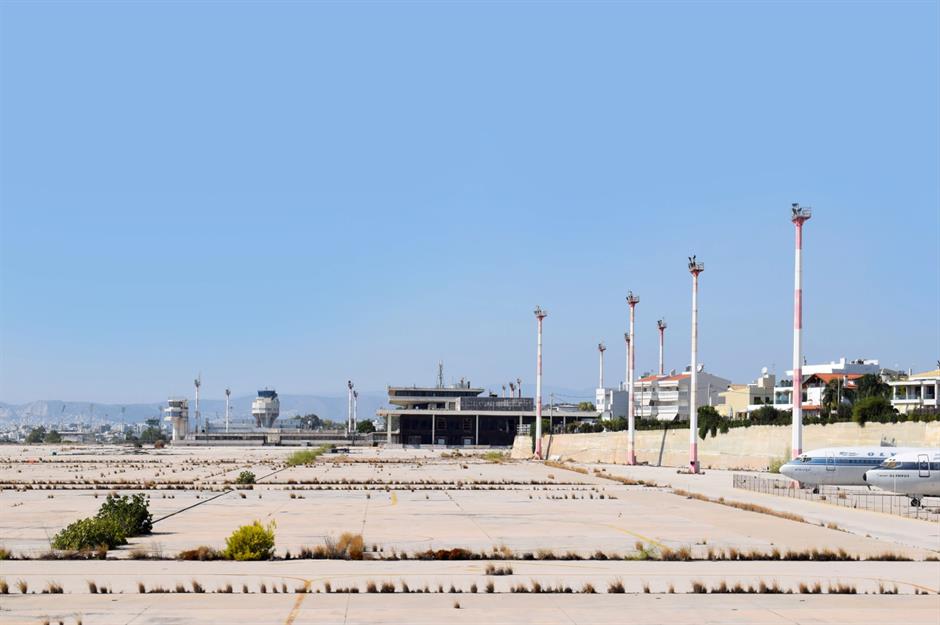
Built in the late 1930s, Ellinikon International Airport had been Athen’s main airport for decades, handling around 11 million passengers a year until its closure in 2001.
Over the last 20 years, the facility has been left in ruins. We're not just talking abandoned buildings and runways overgrown with weeds – rather, the site is the resting place for the planes of defunct airlines, rusting out in the elements.
The Ellinikon Park, Greece
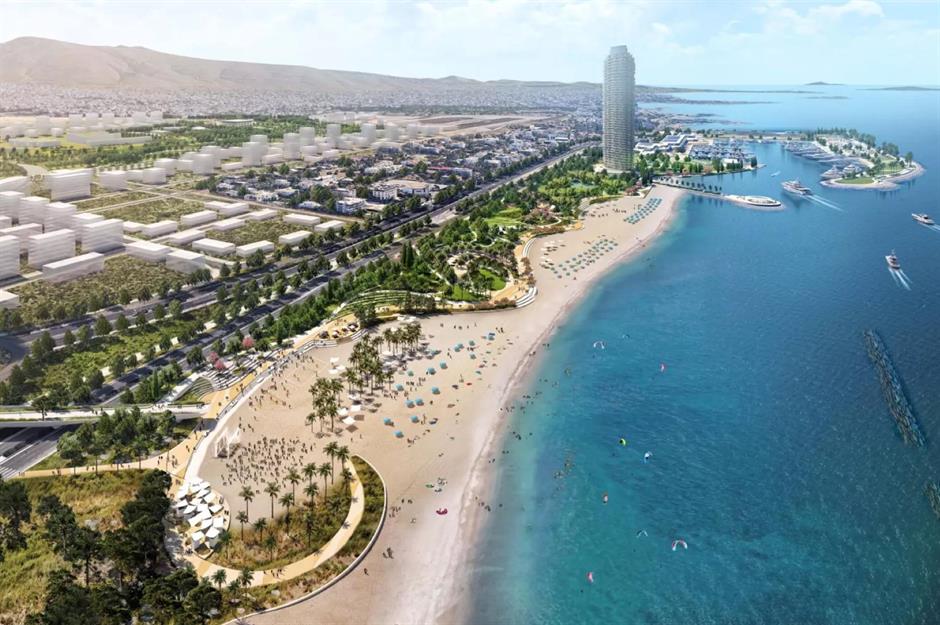
With its waterfront location, plans are in place to transform the more than 600-acre brownfield site into an idyllic park for Athens, which is a densely-populated city lacking green space.
This development, now called Ellinikon Park, has attracted major names in architecture, with plans to design new neighbourhoods while restoring the local ecosystem.
Like many of the urban renewal schemes in formerly abandoned places, there will be a mix of residential properties, shopping destinations, office spaces, and sporting facilities. Plus, soil remediation works will create a new beachfront while architectural features of the airport’s terminal will be preserved.
The Ellinikon Park, Greece
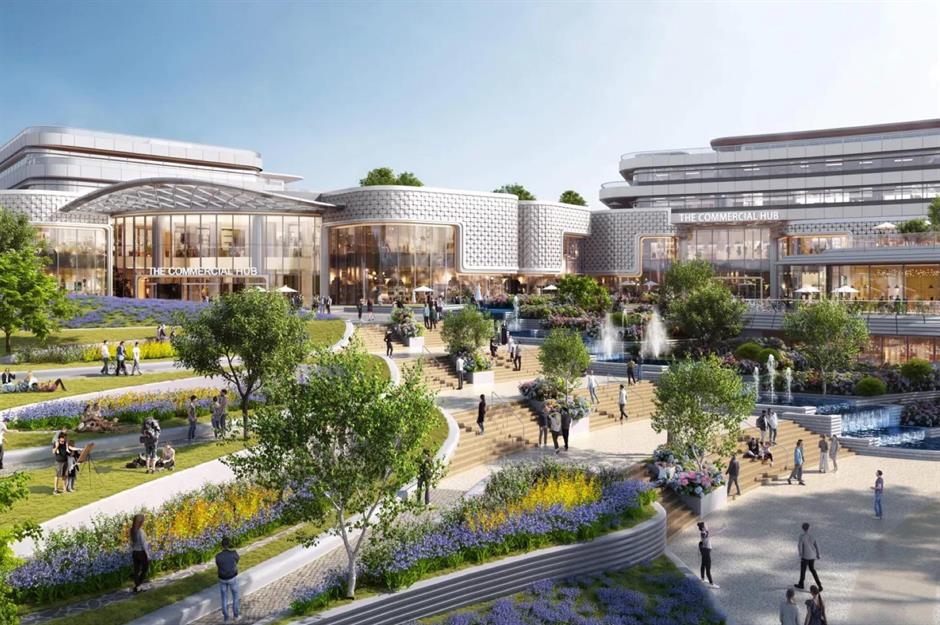
It’s not actually a new plan; the idea of a park was raised even before the airport was decommissioned. However, due to Greece’s financial problems and high levels of government debt, the project has faced repeated delays over the last 20 years.
Work is now underway thanks to a contract awarded in 2021 to real estate firm Lamda Development. It’s one of the largest urban development projects in the world and is estimated to cost at least €8.5 billion ($9bn/£7bn). Most of phase one is expected to reach completion in 2026.
Michigan Central Station, USA
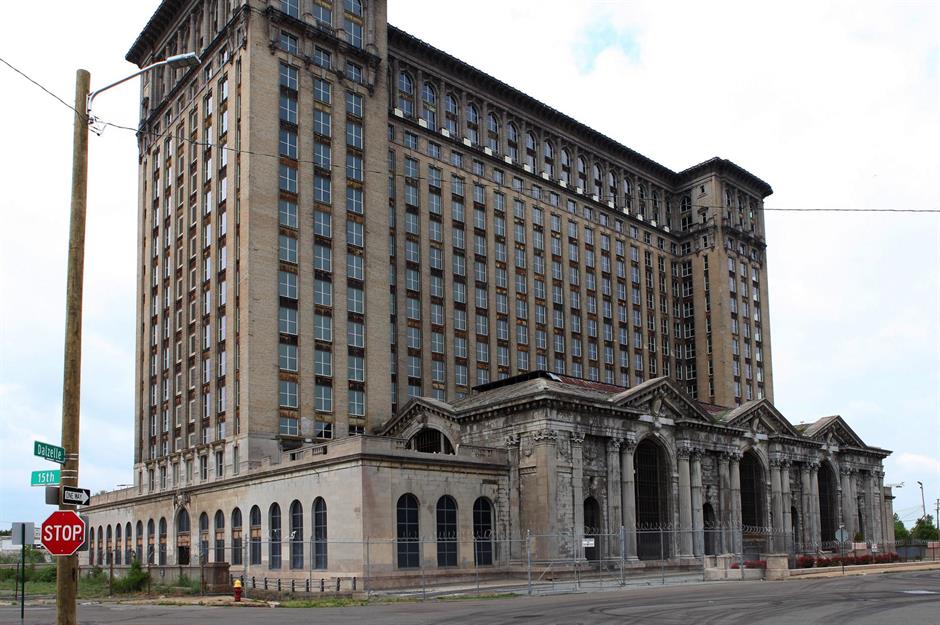
With rail operations flourishing in the early 1900s, the Michigan Central Railroad opened Michigan Central Station in Detroit in 1913. The complex included a three-storey depot and 18-storey tower with space for 500 offices. The train station alone cost around $2.5 million, or $79 million (£62bn) in today's money.
Michigan Central Station saw its peak passenger load in the 1940s before people started to swap rail travel in favour of purchasing cars (many of which were made in Detroit).
The final train left the station in 1988, and despite several redevelopment plans, the historic building was simply left to rot.
Michigan Central Station, USA
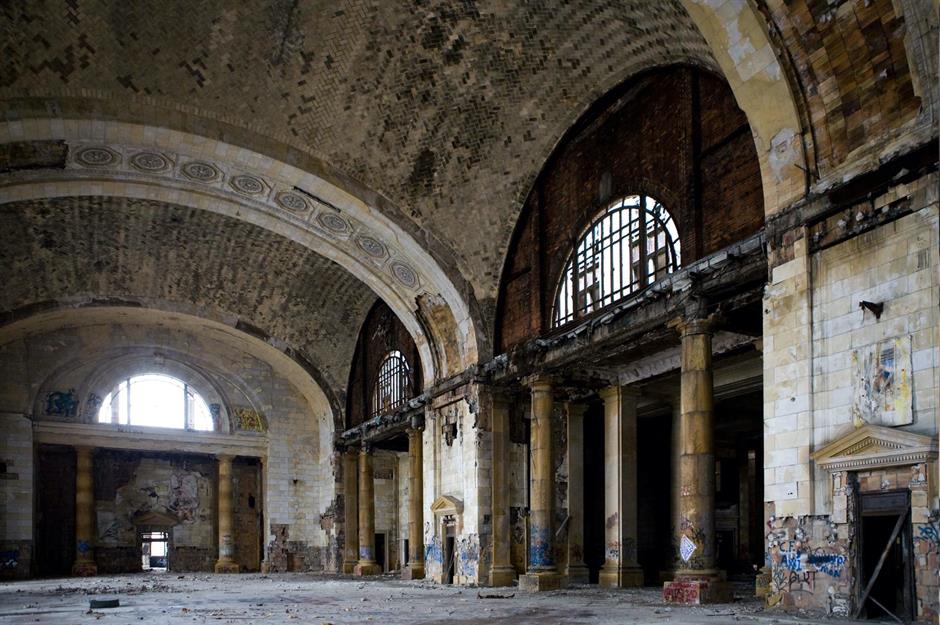
The station’s expansive marble floors, architectural detail, and sparkling chandeliers reflected the grandeur of Detroit’s golden era as a manufacturing hub.
However, abandoned and decaying, the once magnificent building fell victim to looting and vandalism, and the city regularly threatened it with demolition in the late 1990s.
The station's fate remained uncertain throughout the next decade while Detroit declared bankruptcy and struggled to maintain basic services for residents. Then, in 2018, everything changed when the Ford Motor Company purchased Michigan Central Station...
Michigan Central Station, USA
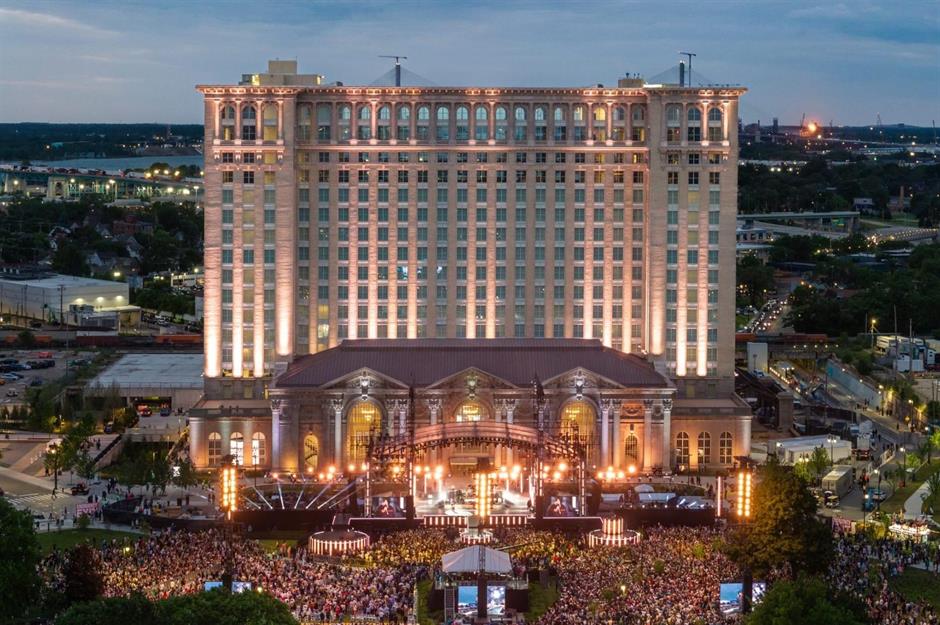
Ford spent $950 million (£740m) restoring the abandoned station. The company plans to reopen the facility as a new campus for the manufacturer, as well as offering commercial space for other businesses, including start-ups, retail, and restaurants.
Following the six-year renovation, Ford hosted a grand opening in June 2024, highlighting its goal for the station to become a cultural hub in Detroit.
Coal Drops Yard, UK

Much of the area around London’s King's Cross rail station has been the focus of significant urban renewal efforts. However, even as recently as 2013, derelict coal sheds dating back to the 1850s sat in ruins.
These long brick buildings had been vital to the coal trade, receiving shipments from mines in the north to be transferred across the city in horse-drawn carts.
Eventually abandoned, much of the depot was destroyed in a fire in 1985. The ruins were occasionally used as a film set or for organised raves, but otherwise remained in a state of disrepair.
Coal Drops Yard, UK
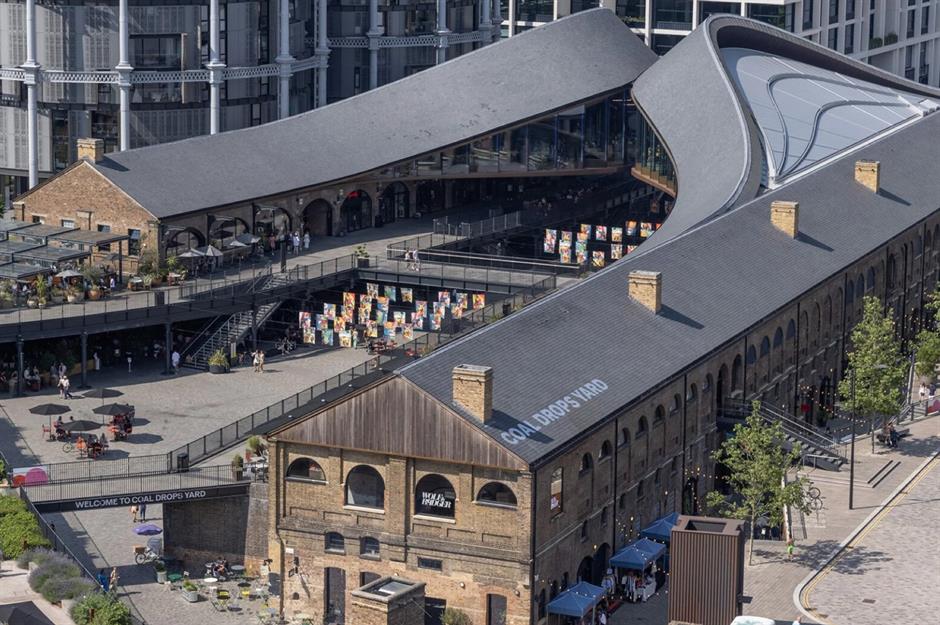
As part of a regeneration scheme for the wider area around King's Cross Station, the two historic but dilapidated buildings underwent extensive renovation.
The work included major structural reinforcement as part of efforts to rebuild and retain the Victorian architecture. It also included designing and constructing a 115-foot-wide (35m) roof extension to create a single multi-level venue from the two formerly neglected sheds.
Coal Drops Yard, UK
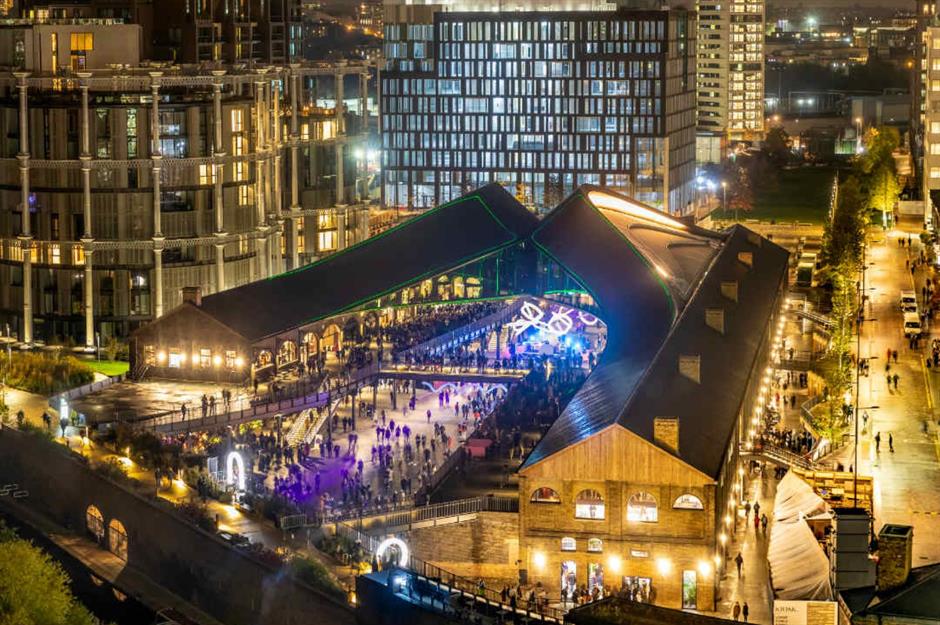
What was once a grimy and forgotten corner of London is now a high-profile architectural destination and home to an assortment of fashion boutiques, art galleries, and dining options.
The Coal Drops Yard project cost £100 million ($130m) and took three years to complete, opening in 2018 to much fanfare and the prospect of attracting 20 million visitors per year.
Dafang Creative Village, China
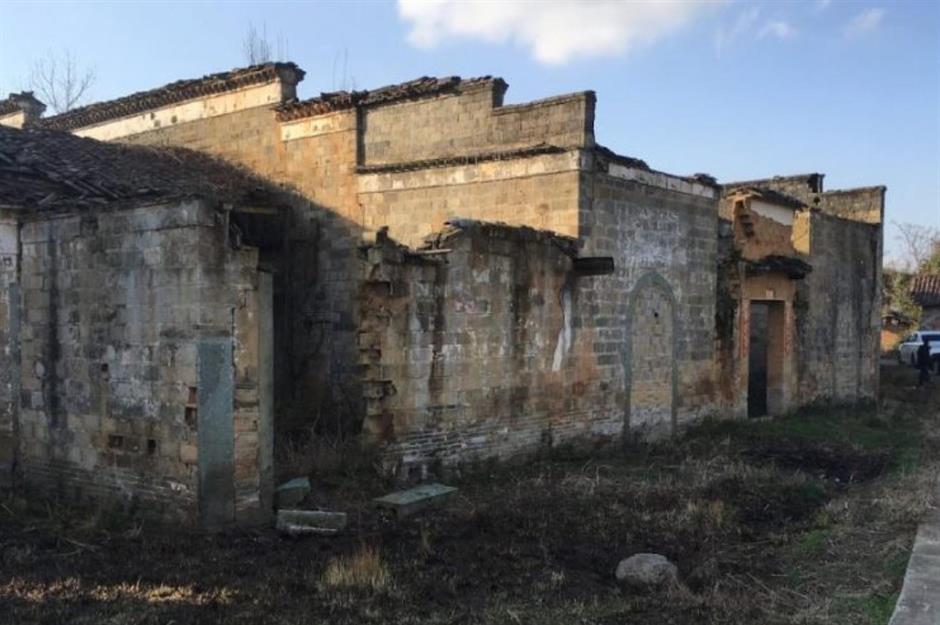
China's rapid urbanisation has resulted in hundreds of thousands of villages being left completely abandoned.
One such place is Dafang, a historic village in Jiangxi Province that stood empty for at least 10 years. Nature had taken over its houses, while its civic buildings were in ruins.
Dafang Creative Village, China
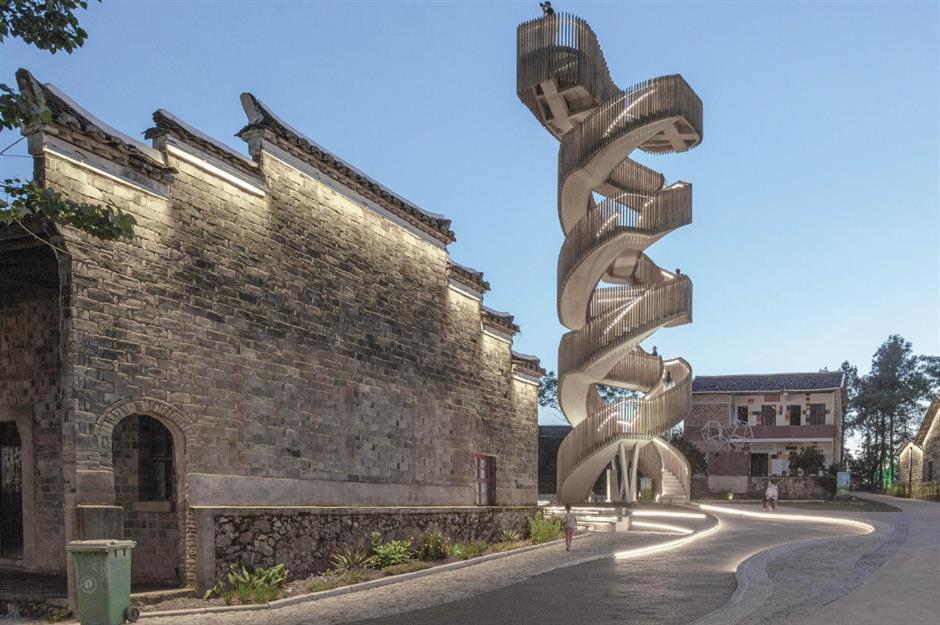
In 2018, Chinese officials invited Dutch cultural development firm IVEM to help plan a revitalisation scheme for the village, hoping the redevelopment would inspire similar works for many of the other abandoned areas in the region.
Architects created designs that repurposed buildings and materials where possible, while a new spiral watchtower was constructed to replace one that had been previously destroyed.
Dafang Creative Village, China
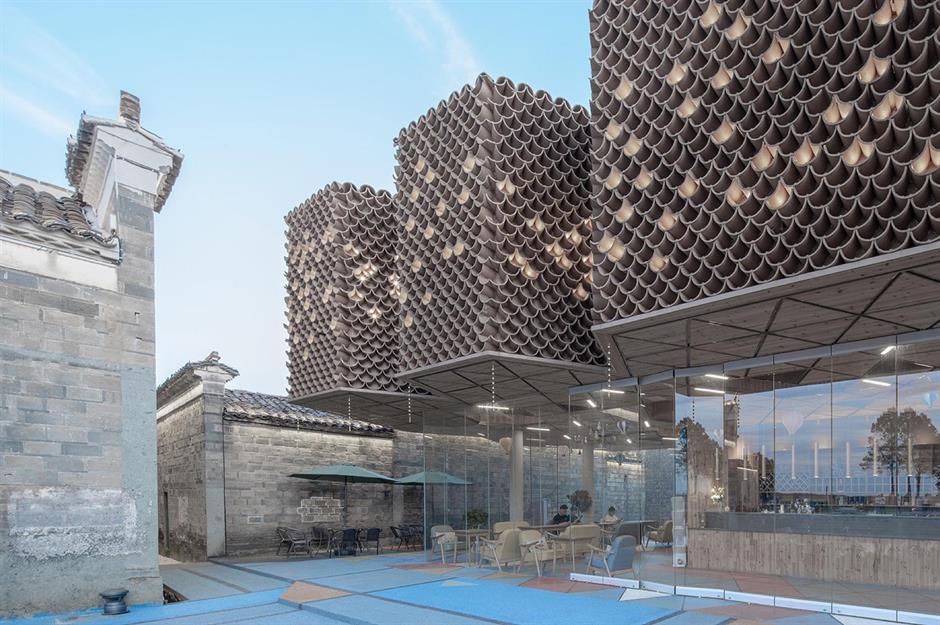
Hoping to create a new art and tourism destination, the Dafang Creative Village officially opened in early 2020 and attracted 140,000 visitors during the first year, despite the disruption caused by COVID-19.
Along with a new public hall, Dafang’s amenities now include a museum, library, and studios for artists, with the goal of bringing new life to the rural village.
Now discover 12 abandoned underground megaprojects around the world
Comments
Be the first to comment
Do you want to comment on this article? You need to be signed in for this feature
Most Popular
Features How Michael Jackson's children boost their bank balances